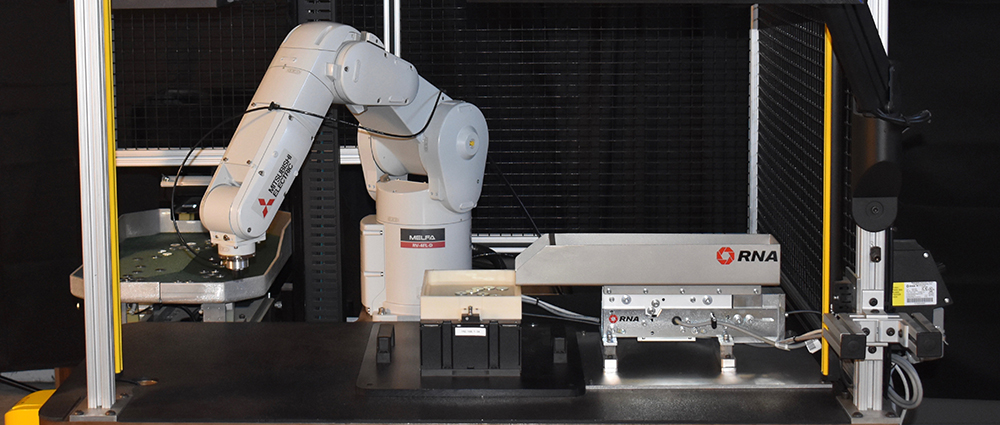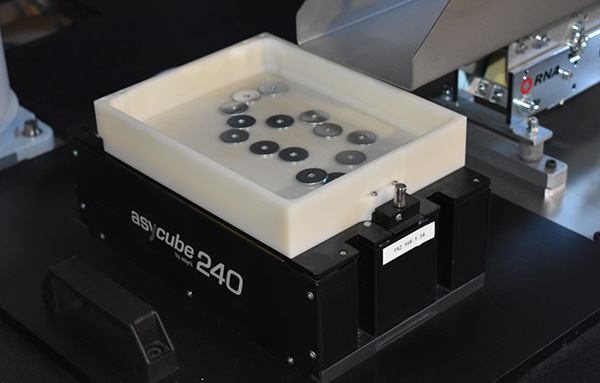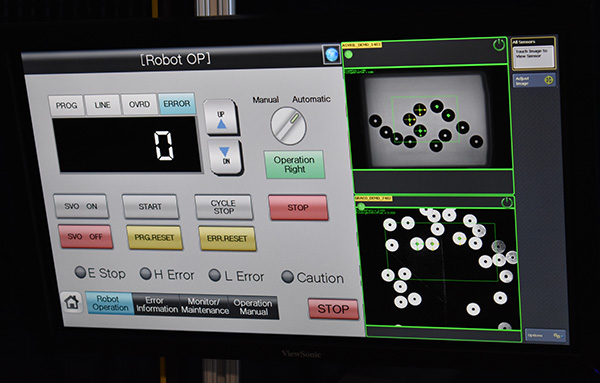
Flexible Part Feeding or flex feeding refers to a process used to feed or load parts into a manufacturing process. A flex feeding system is comprised of a flexible feeder (to feed the part), a vision system (to help the robot locate part) and a robot (to pick and place the part). The main advantage of a flex feeding system is that it allows for different parts to be fed into the same system with little to no effort on the operator’s part. With the availability of low cost robots and the variety of high performance flex feeders, flex feeding systems are hot right now but they might not be right for everyone.
Advantages of Flex Feeding
Flex feeding systems offer some great advantages over traditional part feeding system.
Engineered Solution
A flex feeding solution is an engineered system. If an application is not evaluated and/or engineered correctly, the chances of having a successful feed system will be uncertain. Let’s look at how we evaluate an application to see if it’s a candidate for flex feeding.
Three Step Evaluation Process
Typically, a three-step evaluation process is used to determine whether a flex feeding solution makes sense for our customers. Our goal with this process is to eliminate your risk in implementing a new system and make sure that your project is a complete success.
 Step 1 - Evaluating which feeder is best for your application.
Step 1 - Evaluating which feeder is best for your application.
This step involves studying the size, shape, and condition of the parts as well as the application requirements and then matching them up with the best feeder solution.
Step 2 – Machine Vision Evaluation
The next step is to complete a vision evaluation to determine how well the system would find your part in the feeder.
 Step 3 – Provide a Complete Integrated Solution
Step 3 – Provide a Complete Integrated Solution
The final step of the evaluation process is integrating all of selected components together to provide a complete and reliable solution for your process. Rest easy, our application engineers have already fully integrated the robots, vision systems, and feeders that we offer. The programs for each of the components will be provided to the customer at no charge. This will save weeks of integration time and will create a complete flex feeder solution that we know will
work for you.
When Wouldn’t Flex Feeding Work for You?
There are a couple of instances where flex feeding wouldn’t make sense.
